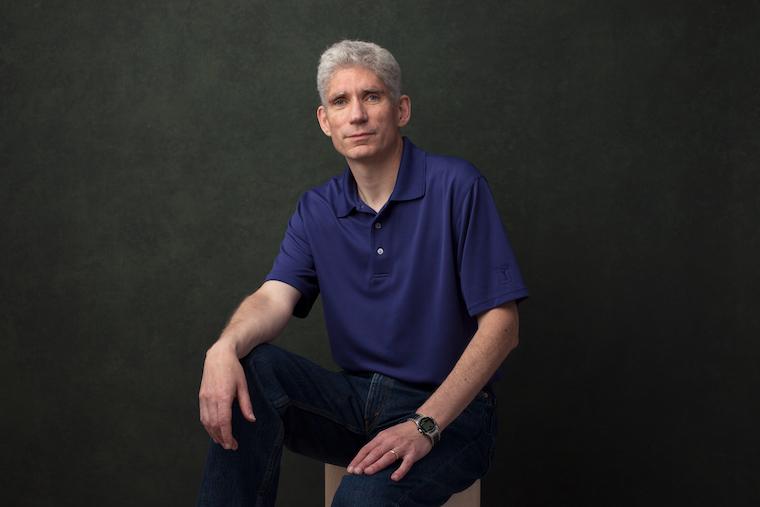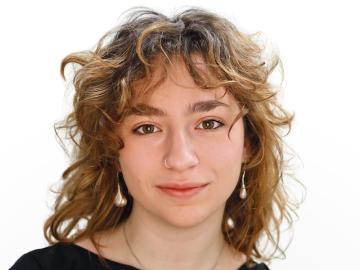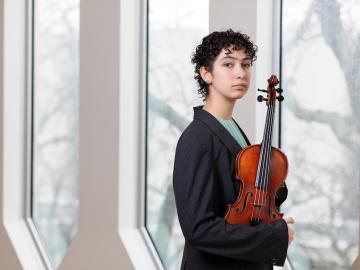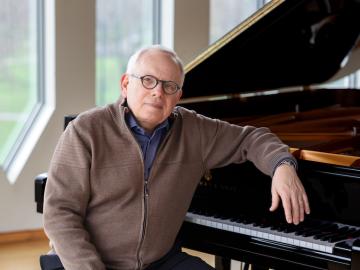A Conversation with Stephen FitzGerald
November 10, 2017
Communications Staff

Q. What year did you begin teaching at Oberlin College?
1998
Q. Explain how your research and experiments with metal-organic frameworks fit into the larger exploration of hydrogen storage for fuel-cell applications.
The key feature to practical hydrogen storage for use in cars is “stickiness.” If the hydrogen sticks too well, you can get it in the storage tank but you will never get it out; stick too weakly and the hydrogen escapes far too quickly. Unfortunately nature has provided us with super glue and Teflon, so the only path forward is to design new materials. Our research uses infrared spectroscopy to measure the “stickiness” of the interaction at a molecular level, determining where and how the hydrogen sticks. This understanding guides chemists in the design of new materials with hopefully the Goldilocks level of stickiness. Because the materials we study, metal-organic frameworks, act like a set of molecular tinker-toys that can be fabricated in a gazillion different ways, there is a realistic shot of arriving at an optimal structure.
Q. Your work has continuously been supported by the National Science Foundation. It’s interesting to note that the NSF values this area of research at the undergraduate level. Could you elaborate?
Undergraduate research at a place like Oberlin is one of the few areas where a professor and student spend long hours working together side by side in the lab. Both parties learn so much from this interaction. Thankfully the NSF understands just how valuable this is. The NSF also appears to recognize research that is a bit different. Working at Oberlin provides a wonderful freedom to be a little eccentric (studying hydrogen with infrared spectroscopy is weird). I don’t have tremendous pressure to publish, so if a project fails the student’s career is not ruined. This freedom allowed us to develop a unique piece of equipment that required a lot of machining, tinkering, and ripping things apart that the manufacturer never intended. However we now have a system that provides data that other research groups just can’t get.
Q. What are some exciting developments in physics that nonscientists probably don’t know about?
The recent development of so called “solar paints” to coat buildings, walls, roads, etc. by groups in Australia is incredibly exciting. These paints use the sun’s energy to extract hydrogen gas (fuel) from air-moisture. Run the hydrogen through through a fuel—the sun—and you get back the original energy and water. If we can work out the storage issues this would provide a completely new way to produce solar power.
Q. What keeps you motivated in your research?
I love puzzles, and I love playing with things in different ways. The challenge of designing an experiment to answer a specific question and then the excitement of being the first people to know the answer is tremendous. Many times it doesn’t work, something breaks, or the result is boring, but those few special times when everything comes together is what keeps us all going.
Q. Briefly explain the process for training new students in your lab and getting them up to speed with the equipment and procedures. What are the challenges and rewards of collaborating with students in your research?
I try to get students involved with taking data as soon as possible. In most cases that simply means having them be the one to push the button. Our experiments have a lot of dead time, waiting for things to heat-up, pump-down, etc., so then I can ask questions such as, “Why do you think we used copper here rather than stainless-steel,” or, “Forget about the computer, what is the machine actually measuring?” Invariably these lead to more back-and-forth questions. The reward for me is the excitement of the students, for whom this is all fresh and new. I also have had many “a-ha” moments when trying to answer students’ questions. Often these lead me in whole new directions I would never have considered. The challenge is to remember that while I may have explained this concept a hundred times before, for each student it is brand new.
Q. On teaching and mentoring undergraduates, what is something you know now that you wish you’d known when you first started?
Students can only digest so much information at a time. Be it a lecture or research meeting, you reach a stage when there is simply no point in trying to convey additional information. Slowing down and telling an amusing story seems to work well in those cases.
You may also like…
Meet Your 2024 Student Commencement Speaker
May 10, 2024
Violinist Maya Irizarry Lambright to Solo with Oberlin Orchestra
May 9, 2024
Peter Takács—A Half-Century Celebrated
May 4, 2024


